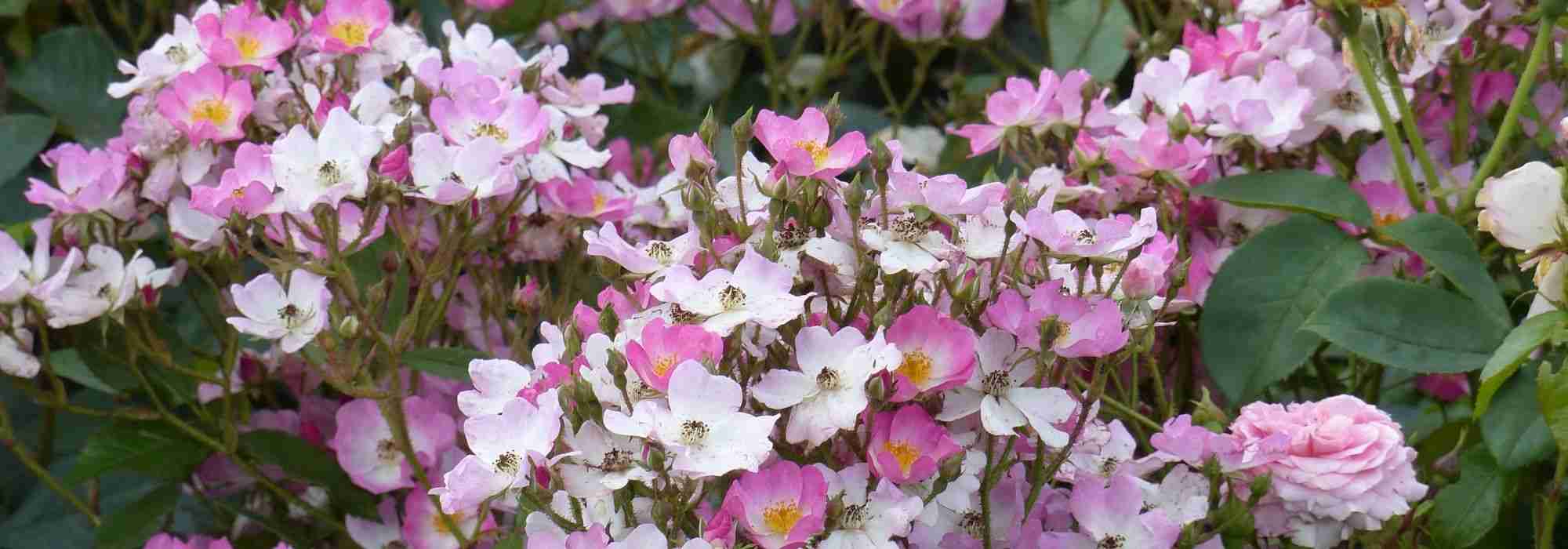
The most beautiful Dog roses
Our selection
Contents
Dog roses, also known as botanical or wild roses, are roses that can be found in nature, where they grow spontaneously. Some are the ancestors of modern horticultural varieties. These roses exhibit natural resistance to diseases, hardiness, and adaptability to all types of soil.
Their simple cup-shaped flowers, sometimes fragrant, generally consist of 5 petals that open to reveal a sparkling heart of stamens.
After their flowering period in late spring or early summer, they have the advantage of retaining an aesthetic appeal. These wild roses are adorned in autumn with lovely decorative fruits (hips), which are highly appreciated by birds.
Beyond the most well-known varieties, such as dog rose Rosa canina, Rosa complicata or Rosa glauca, there are many bush, climbing, or ground cover varieties.
Here is our selection of 5 favourite dog roses to adopt in the garden!
The Rosa moyesii ‘Geranium’ botanical rose: an unusual beautiful colour
Rosa moyesii ‘Geranium’ (Moyes’ rose) is a large and charming botanical rose native to China. At maturity, it reaches up to 2.5 metres in height and 1.3 metres in spread.
From late spring to June, it is adorned with beautiful hips measuring 5 cm in an unusual cherry red, accompanied by a centre of pale pink stamens. They contrast perfectly with the bright green foliage, which disappears at the end of the season.
After flowering, large and unique elongated bright orange fruits appear. They are appreciated by birds as much for their decorative aspect at a time when the garden begins to lose its lushness.
Like all hips, its flowers are particularly melliferous and will delight pollinating insects.
Rosa moyesii ‘Geranium’ offers hardiness down to -15°C, proving to be easy to maintain, robust, and low-maintenance.
Its bushy habit and rapid growth will easily brighten up the garden by adding a very natural touch. This thorny bush will be ideal in a country hedge, at the back of a border, or even trained as a climber.
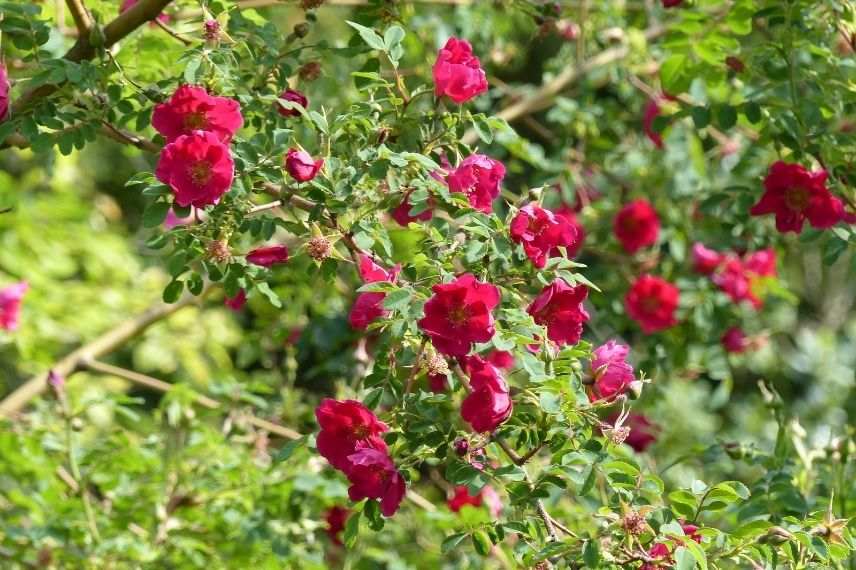
Rosa moyesii ‘Geranium’
The Rosa nitida botanical rose: a groundcover with stunning flowering
Native to North America, the botanical rose Rosa nitida is a small model, but packed with qualities.
Between June and July, it is covered in 5 cm dog rose flowers, in a magnificent vibrant violet-pink, illuminated by a nest of stamens. If not pruned, the roses will turn into small dark orange or red globose fruits by the end of the season.
In spring, its young shoots are covered in a lovely red down, and in autumn, the glossy green foliage takes on fiery coppery hues. It is evergreen in regions with mild winters.
Rosa nitida offers a low, spreading silhouette, reaching only 60 cm in height, with a tendency to sucker. Its spread can reach 1.5 metres, making it an ideal variety for ground cover in beds, slopes, or borders. Preferring cool to moist, even marshy soils, it can even be grown near a pond or marsh.
However, the flowering of this small thorny bush will also look wonderful in a planter or bowl, enhancing a balcony or terrace.
Grow this botanical rose in sunny or partially shaded locations in warm climates, in soil that is rather rich in organic matter and deep, without excessive lime. Hardy down to -15°C and resistant to diseases, it will acclimatise in most regions.
This charming rose will immediately add a natural touch to the garden, requiring no special maintenance.
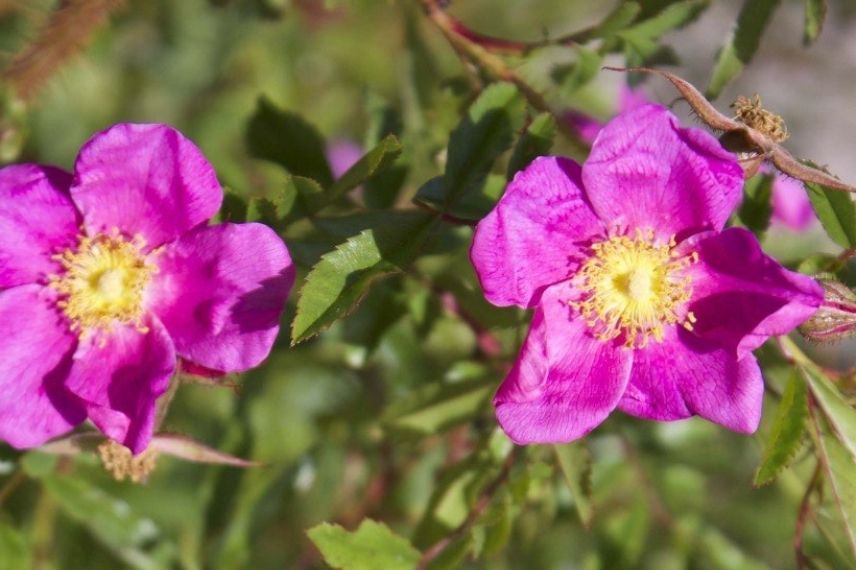
Rosa nitida
Discover other Rosehip - Wild Rose
View all →Available in 2 sizes
Available in 2 sizes
Available in 2 sizes
Available in 3 sizes
Available in 2 sizes
Available in 3 sizes
Available in 3 sizes
The Rosa hugonis botanical rose: a true sun in the garden
Rosa hugonis is a vigorous large botanical rose native to China, which blooms early and for a long time in spring between April and May, for nearly a month. It is adorned with delicate solitary flowers measuring 5 cm, in a pale sulphur yellow, highlighted by the golden yellow of its crown of stamens.
Its finely cut green foliage offers purplish hues in autumn, before small fleshy brown-mahogany fruits dress its thorny branches.
Resistant to diseases, hardy down to -15°C, and tolerant of both drought and altitude, it will find its place in most gardens. However, prefer sunny locations, sheltered from moisture to ensure a beautiful flowering.
This bush rose with a rounded habit reaches impressive dimensions: 2 metres in height and the same in spread. Use its imposing silhouette as a hedge to delineate spaces, accompanied by other bushes that will take over at the end of its spring flowering.
Light white flowers, blue flowers in complementary colours, or even a range of yellow-orange shades will look stunning alongside Rosa hugonis.
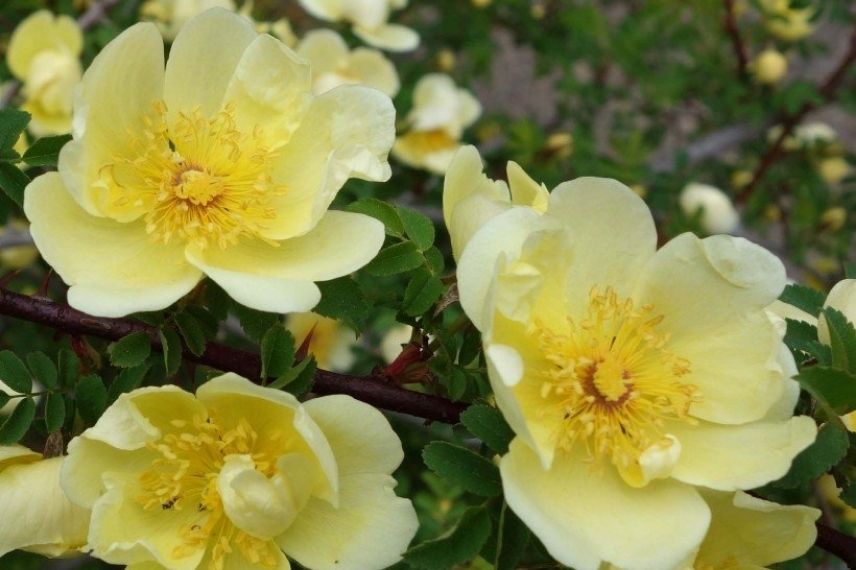
Rosa hugonis
Read also
The most Beautiful Meilland RosesRugosa rubra rose: one of the few perpetual botanical roses
The Rosa Rugosa rubra (rugosa rose or Japanese rose) is a vigorous botanical rose, native to Southeast Asia.
It offers a long perpetual flowering period of several months from June to September, which is uncommon among roses of the genus. Its large solitary simple flowers of 7 cm consist of delicately crumpled petals. They display a vibrant dark fuchsia pink, opening to a sunny heart of stamens. These roses emit a strong and sweet fragrance.
At the end of the season, they transform into large fleshy edible red fruits, particularly used in jams.
The dark green, crinkled foliage turns golden yellow in autumn before falling.
Thriving in its natural habitat along sandy coasts and dunes, Rugosa rubra will thrive in even poor, sandy, and occasionally dry soils. It also tolerates sea spray, hence its other nickname, Beach Rose.
Unfussy and robust, it withstands extreme weather conditions of rain and cold without ever falling ill. Its hardiness down to -20°C makes it a variety suited to many regions of the country.
In sunny or partially shaded exposure under warm climates, it will develop its spiny, bushy growth to 1.25 metres in height and 1 metre in spread. It will integrate beautifully into a wild and natural-looking flowering hedge.
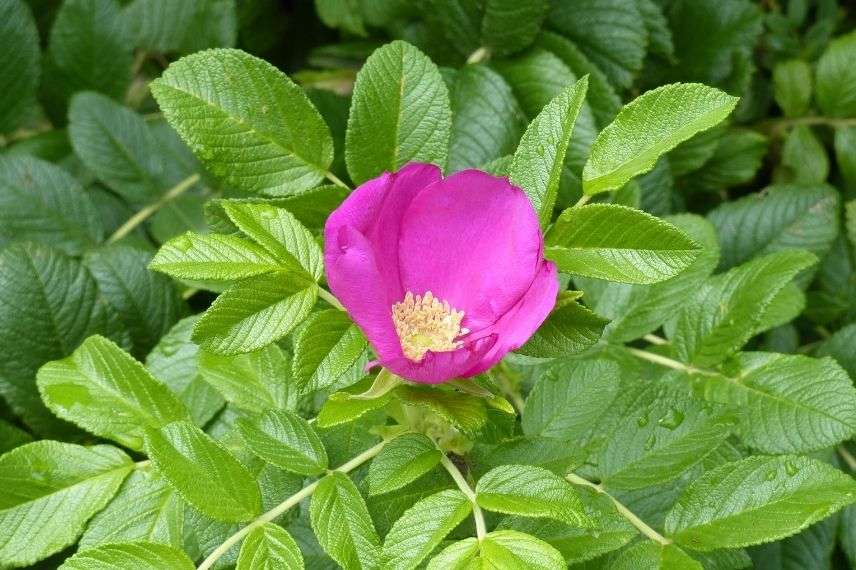
Rosa rugosa ‘Rubra’
The Rosa multiflora climbing botanical rose: a white cascade to adorn the garden
The climbing botanical rose Rosa multiflora originates from East Asia. It will gracefully adorn all types of supports, from pergolas to fences, or charmingly conceal walls and structures.
This wild rose blooms in summer, between June and July. It produces a multitude of small white eglantine flowers, clustered together and slightly fragrant. Their centres are beautifully decorated with a nest of yellow stamens. Following this flowering, decorative red fruits will appear in autumn.
Its green deciduous foliage turns yellow before disappearing.
While it is often used as a rootstock for more delicate varieties, this is due to its vigour, natural hardiness, and powerful roots.
This liana rose can quickly reach impressive dimensions: 5 metres in height and 3 metres in spread. It will thus colonise large spaces or give a wilder air to borders.
The climbing rose Rosa multiflora thrives in all types of soil, even heavy or sandy, except for overly chalky soils that cause its foliage to yellow and impair its health. It is hardy down to -15°C.
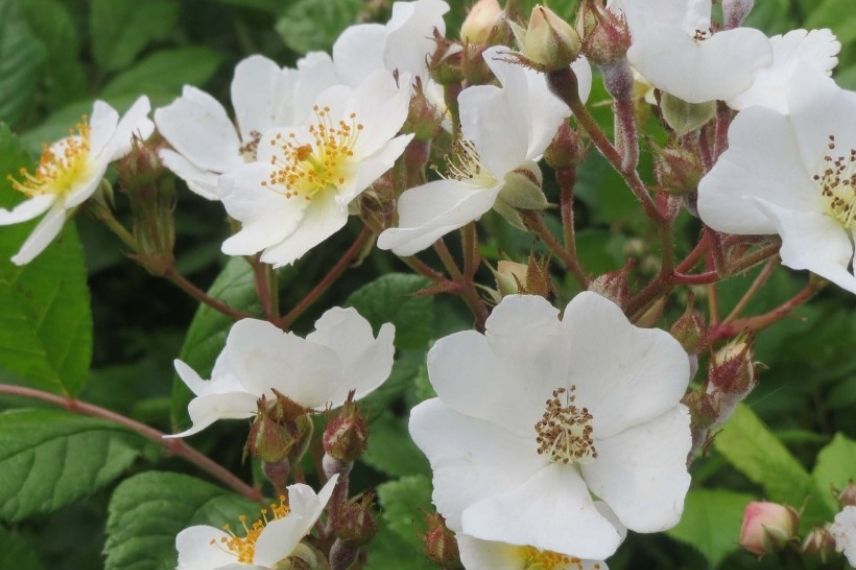
Rosa multiflora
- Subscribe!
- Contents
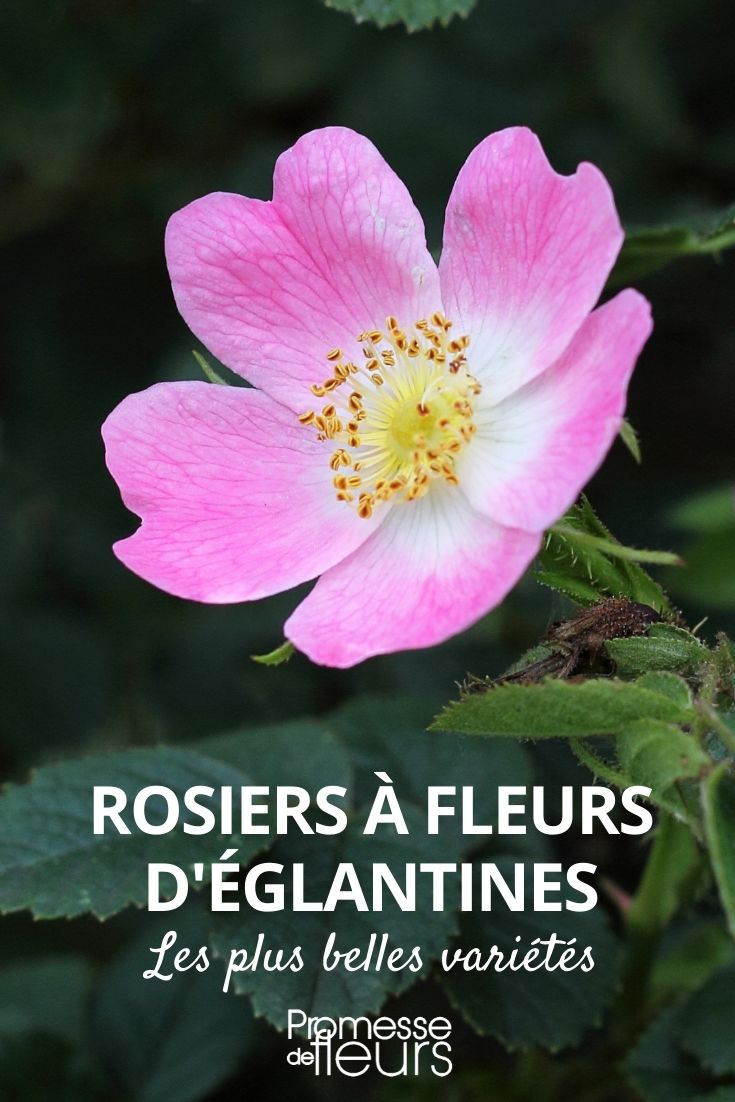































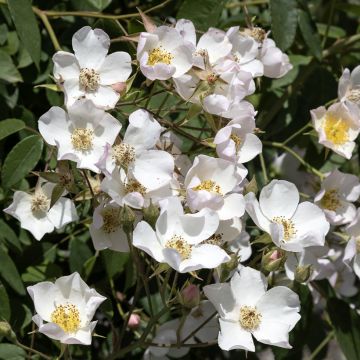
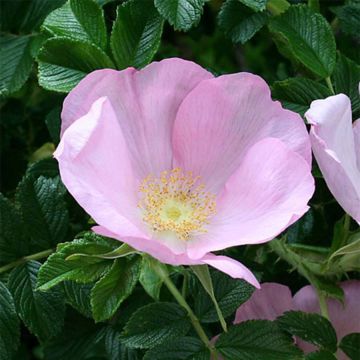
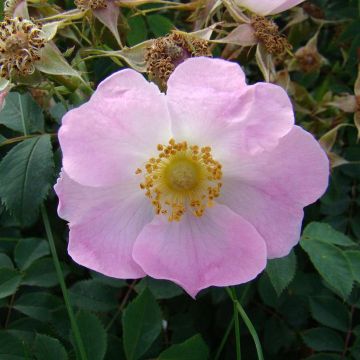
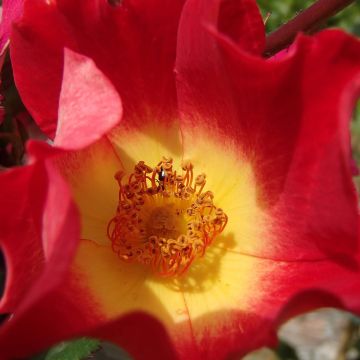
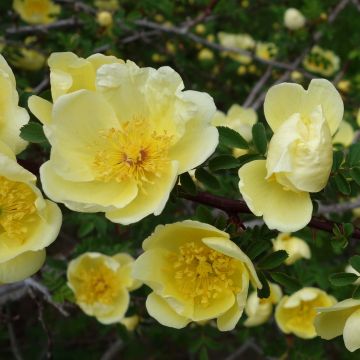
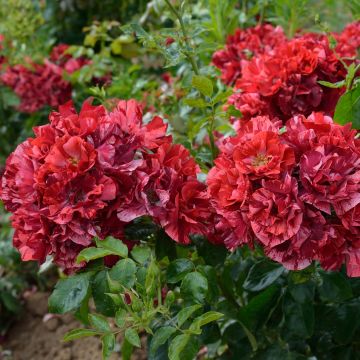
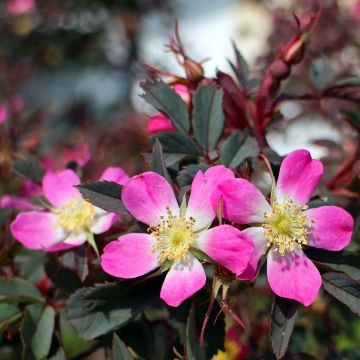
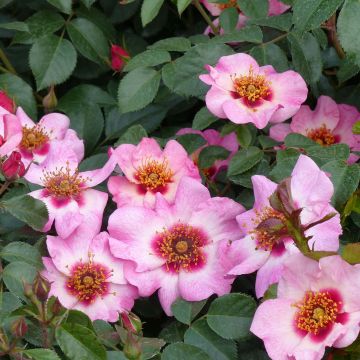
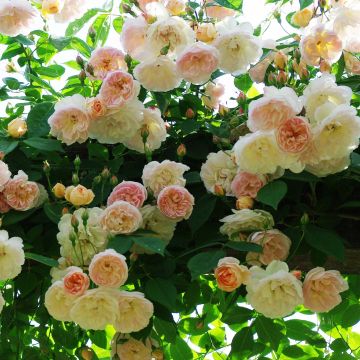
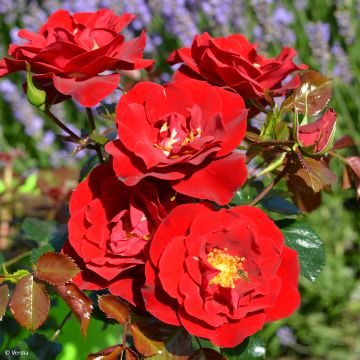
Comments